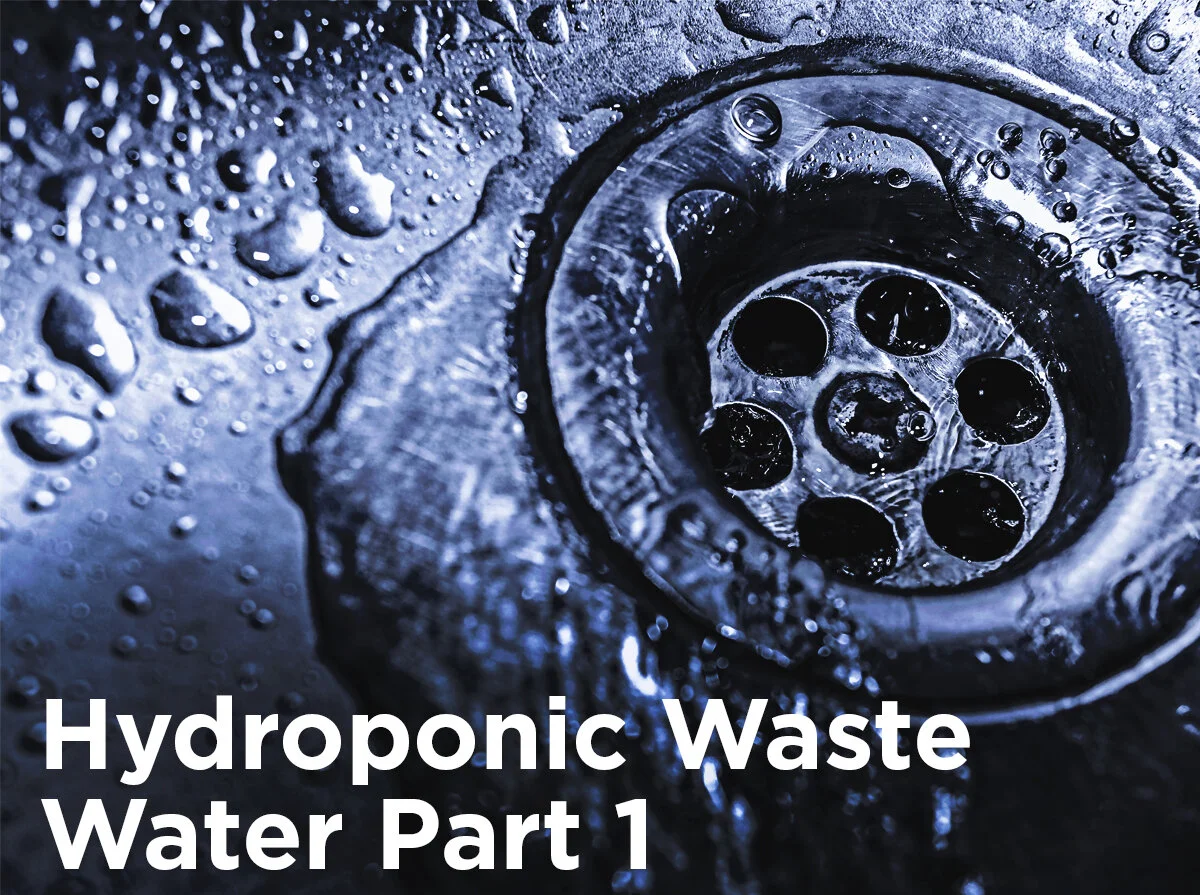Hydroponic Waste Water, Part 1
Aahhhh summer… In my humble opinion, the best time of year. Our BFF, the Sun, has come back from its vacation in the southern hemisphere, backyard barbeques are in full swing, and the lime trees have yielded their bounty for fresh mojitos. There are plenty of people out there who even now are shaking their heads at my summer madness, but I’m sure there is one thing we can all agree on: IT’S HOT (especially here in Texas). And that means stress, not just on us, but on our plants as well. We are always looking for ways to save water. For those of you blessed enough to live in an area of the country that enjoys the wondrous phenomenon known as “rain,” you probably aren’t that concerned. Yet in Texas, California and other hot, dry places, we experience a different phenomenon: water rationing.
But wait! You’ve got a handy-dandy hydroponic system! And you’re thinking you can just take whatever is left from your reservoir change-out and dump that in the garden to save a few cents on your water bill. Well that’s not necessarily a good idea. In some cases it can be downright dangerous. The topic of what to do with the leftover water from your system is a heated one and many online forums will tell you any number of opinions of what to do. So to save you some time, some grief, and especially your plants, here is a best-practices game plan that marries those ideas together.
The Dangers of Dumping
Pro tip: Invest in good pH and EC meters. These are necessary tools for monitoring your nutrient solution and will help you control your system efficiently. For even more detail, take a sample of your water to your local pet shop that carries aquarium equipment. They will often test your sample for free.
So what do we do with our “waste water” when we change out the reservoir? For the sake of your system, do not try to put this solution through your RO filter. It will significantly reduce the life of your filters. Instead, dilute your solution 50/50 with regular tap water. Apply this to house plants and outdoor potted plants (potted plants only, not raised beds or flowerbeds). They’ll love it!
After that, the most important factor in determining what to do with any excess water is where it is safe to dump it out. If you are within 1000ft of ANY open-air waterway, i.e. creeks, lakes, rivers, ponds or even drainage ditches with standing water, DO NOT use it in your landscape. Nitrogen in the water can be washed out of the soil as runoff into the water system. This can cause extreme algae or phytoplankton blooms which deplete oxygen levels in our natural waterways and oceans, severely damaging the eco-system. Beneficial microbes and minerals can scrub and filter the water as it makes its way through the soil, but only if there are not excess fertilizers already built up in the soil and there is enough volume of soil (meaning distance) between the application area and the waterway.
If you are within this fertilizer danger zone, don’t fret. It is safe to pour the remaining solution down any household drain. Hydroponic fertilizers are much more benign than common cleaners and soaps that are poured out and will be properly treated. Nevertheless, if you have any concerns about your septic system being able to handle it, call your local Municipal Water Treatment Facility. They will be able to tell you about locations and facilities where they can safely dispose of your excess solution.
Alternatively, spread the love! Ask neighbors or coworkers if they would like some “grade A” brew for their potted plants, easily transported in old milk jugs or mason jars. They’ll be so pleased they might even pay you with sweet summertime lemonade and snickerdoodles.
If you are not within range of the waterways, feel free to apply the diluted solution to your lawn and garden. It is recommended that you start with flowerbeds and ornamentals first, as they will use more of the phosphorus than turf grasses. This will also reduce your use of outdoor fertilizers, saving you money and preventing buildup in the soil that can burn your plants.
Cure the Summertime Blues
So there you have it: a sure-fire way to getting the most out of your change-out solution. If this isn’t enough to make you love summer as much as I do, be sure to look for Parts 2 & 3 for even more ideas on how to manage hydroponic waste water. And don’t forget that our experienced staff is on-hand to help you through the dog days and find economic solutions for your hydroponic solution.
What do you love about summer? Leave a comment below or give us a shout out on Facebook, Twitter, LinkedIn, or Pinterest!
Sources:
http://atlasbutler.com/heating-and-cooling-repair/4-ways-reuse-dehumidifier-water/
http://garden.org/nga/searchqa/answer/16716/
http://news.stanford.edu/news/2005/march16/gulf-030905.html
http://www.scientificamerican.com/article/fertilizer-runoff-overwhelms-streams/








